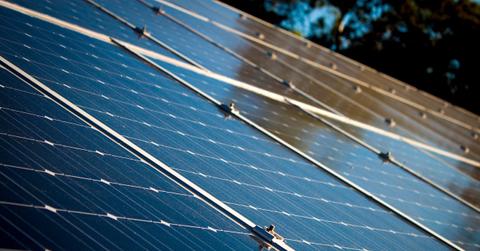The U.S. Is The Second-Most Attractive Country For Renewable Energy Investment
Solar import tariffs hasn't slowed down development of clean energy in the United States. In fact, according to the latest RECAI report from EY, they're only second to China as far as an attractive location to invest in sustainable power products.
Updated Nov. 19 2020, 9:38 p.m. ET
Is the United States struggling in sustainability after pulling out of the Paris Agreement and placing a tariff on solar technology? According to a study from Ernst and Young (EY), it’s actually still the second-most attractive country in the world for investing in renewable energy. This is due to rapidly lowering costs in manufacturing solar, wind, and battery products.
EY’s latest release of the Renewable Energy Country Attractiveness Index (RECAI) shows that only China remains ahead of the United States in the rankings. That’s up from third place last year and supplanting India from the second spot. The latter country has now fallen to fourth place due to undervalued solar auctions and developer-distribution disputes.
Levelized cost of renewable power has dropped by 18 percent worldwide according to Bloomberg New Energy Finance. This brings installation costs to $55 per megawatt-hour for onshore wind projects and $70 per megawatt-hour for solar photovoltaic panels. RECAI also notes their pairing to battery storage solutions, which are also coming down in costs.
The solar panel industry has been stressed this year after President Donald Trump implemented a 30 percent tax on imports of solar cells and modules. This percentage would decline by five points over the next four years before disappearing. This was done to target Chinese solar development, but the concern was jobs being lost with higher manufacturing costs.
However, EY believes that the market has already absorbed the tax hit and its risen solar prices to only 2016 levels, which are relatively cheap. Solar production costs are already being cut as subsidies are being reduced around the world. This will also just help boost wind power projects in the near future for the US.
“As demonstrated by recent research conducted by EY and a leading global analyst house, we are counting down to a series of tipping points that will accelerate renewable energy penetration,” Ben Warren, EY’s Global Power and Utilities Corporate Finance Leader, said in the introduction of the RECAI report. “Wherever we look, we see growing evidence of the maturity of the renewable energy sector.”
Rounding out the top five of RECAI’s list is Germany at third, aforementioned India at fourth, and Australia at fifth. The report highlights Australia’s growth in renewable investment, hitting $9 billion US last year (up 150 percent from the year prior). Even more notable is the country’s energy storage, led by Tesla’s involvement at a wind farm in South Australia.
Along with Germany, the United Kingdom, the Netherlands, and Denmark all moved up and are included in the top 10. Despite a drop in renewable investment last year, the UK has restored some old wind projects and have subsidy-free solar projects in the works. Japan joins India in tumbling down the top 10, likely because of a reported 80 solar manufacturing bankruptcies.
